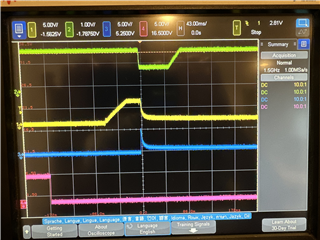Hi, I have a system that has 4x TXS0102 parts for 8 I/O signals
VCCA = 1.8v
VCCB = 5v
(Both shared between all parts)
OE = tied to VCCA
There are 3 different conditions being used:
Input: A is Hi-Z FPGA input, and B is driven by other CPU
Output: A is driven by FPGA output, B is Hi-Z connected to other CPU input
Unused: A is Hi-Z, B is floating
The problem is that I am seeing a condition where VCCA is pulled low for a short period to ~1.0v. Is it possible for the LXS0102 to exhibit a condition which would cause a brown-out in VCCA? Perhaps some kind of noise or transient on the input or unused pins?



